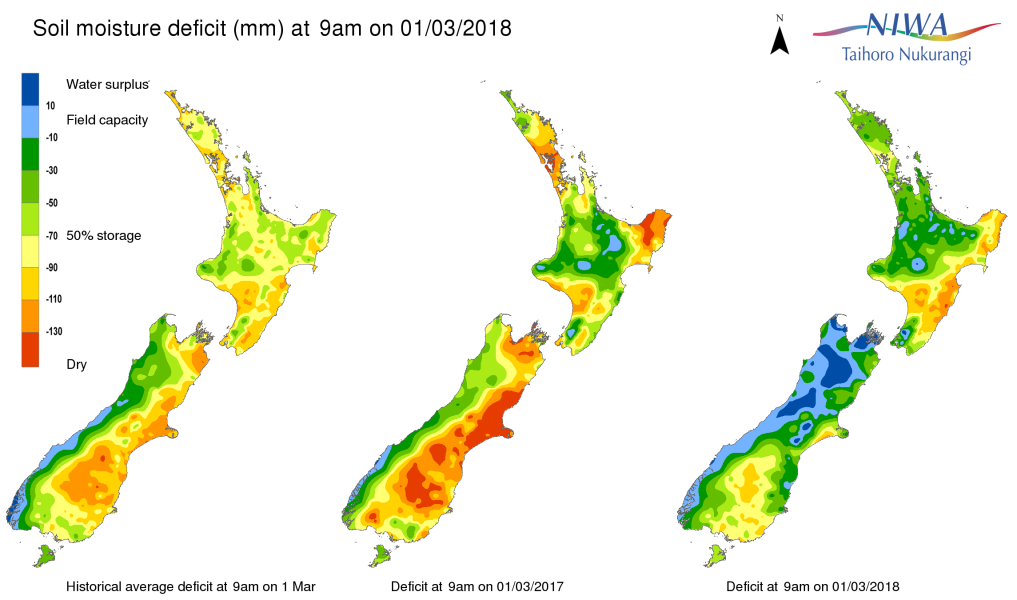February 2018 was marked by two ex-Tropical Cyclones, Fehi and Gita, that impacted New Zealand on the 1st and 20th of the month, respectively. These two storms contributed to lower than normal sea level pressure that extended from the tropics to the north of New Zealand and southward across the country.
Temperature
Mean temperatures were above average (0.51 to 1.20°C of average) or well above average (>1.20°C of average) across the North Island. Temperatures were more than 2°C above the February average for parts of Hawke’s Bay, Gisborne, and across lower Manawatu-Whanganui. In the South Island, temperatures were above average across the north and mostly near average (-0.50 to 0.50°C) across the central and south.
Rainfall
Rainfall was well above normal (>149% of normal) across much of the upper North Island, Wellington-Wairarapa, the upper South Island, Canterbury and Otago. Elsewhere, rainfall was above normal (120-149% of normal) or near normal (80-119% of normal).
Soil Moisture
As of 28 February, soils were wetter than normal for the time of year across the upper North Island and the central and upper South Island. Soil moisture was near normal elsewhere; although parts of Hawke’s Bay, Gisborne, and Southland had slightly below normal soil moisture.



